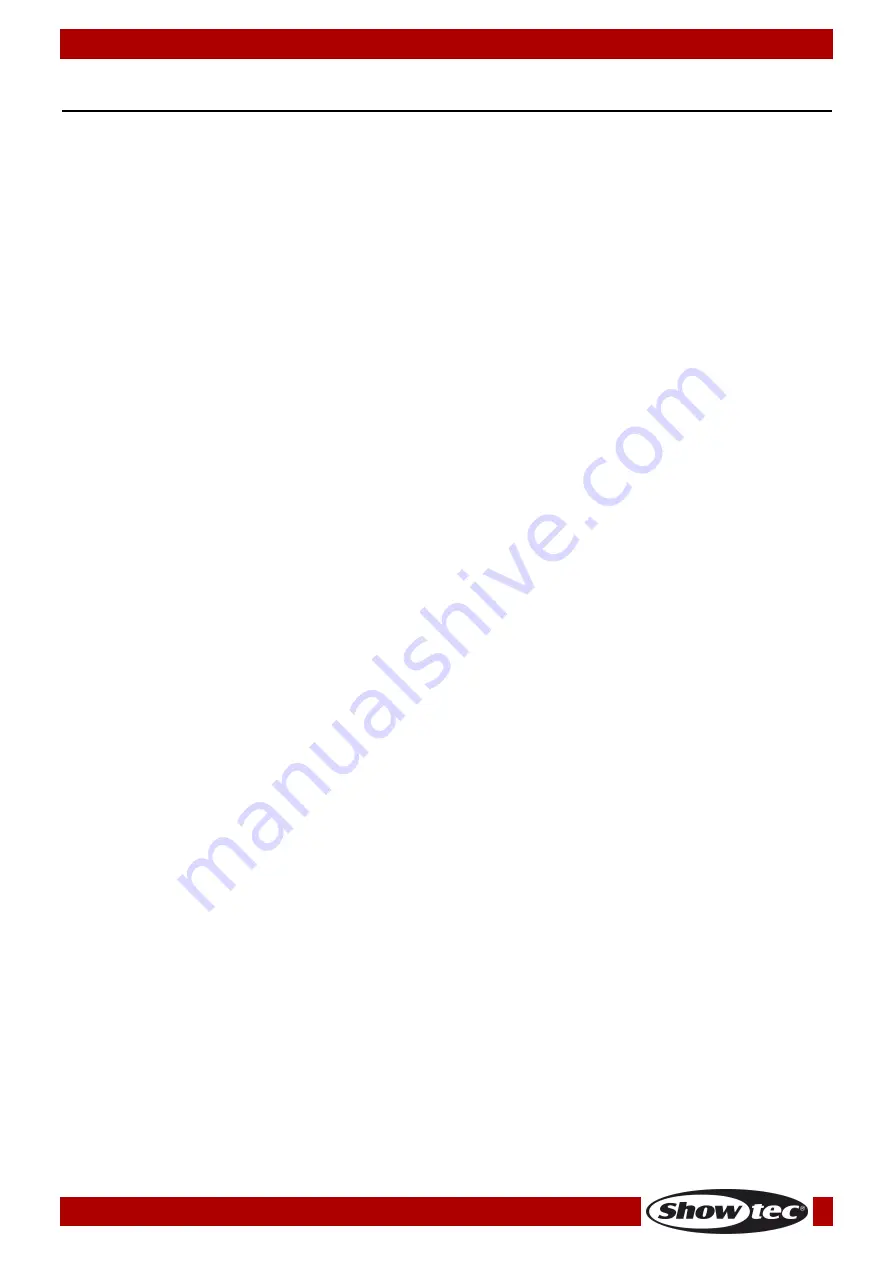
13
Ordercode: 50702
SM-16/2 FX
Scene
There are many functions in this controller to create a complicated lighting effect. The most fundamental
part is a scene, in which you can store a “look” you have created using your light.
There are 16 scene buttons on 5 pages. A total of 80 scenes can be stored.
Creating a scene
This console has a special internal scene called the “Programmer”. Whenever you change a channel of
a fixture, the changes are stored in the Programmer. When you record a scene, the contents of the
programmer is stored in the scene. Nothing else from the console output is stored.
This console has two programming modes, “Record by Fixture” (the normal mode) and “Record by
Channel”. You can change the mode by pressing <A> when storing a scene. The differences between
these two modes are:
Record by Fixture:
When you change any channel of a fixture, all the other channels are placed in
the Programmer as well. You will get exactly the result you expected when you recall the scene. But
you can’t combine scenes containing the same fixtures, because the new scene will just override the
old one.
Record by Channel:
Only the channel you change is stored in the programmer. This means you can
save scenes which only contain certain information, then recall them with other scenes to set colors,
gobos, etc. This is much more flexible but it initially requires more programming, because you need
several scenes to get a result. This can cause problems if you don’t keep tabs on what you are
doing. (This is known as Tracking mode on other consoles).
When you press <Clear>, all fixtures are cleared from the programmer. To start programming a scene you
should start every time pressing <Clear>. If you don’t do that, it is possible you will record fixtures you
don’t want to. You also need to press <Clear> when you finish the programming, because any value in
the programmer will override playbacks. Turning on a scene does not put the values from the scene in
the programmer (However the Include function allows you do this).
Tip: Press <Clear> to clear the programmer. This ensures that you are starting with a clean slate.
01)
Set up the stage effect using the fixtures. You can include shapes in a scene. Remember that only
the fixtures you have changed, will be included in the scene.
02)
Press <Record>.
03)
Select <A> [Record Scene].
04)
Select desired mode (record by fixture/channel, mode 0, 1, 2 or 3). For more info see page 15.
05)
At this time, the indicators of the empty playbacks will start flashing.
06)
Press a flashing Unit button to record the data. (First select a new page if you want to use a different
page).
07)
Press <Clear> to clear the programmer. Go back to step 01 to program more scenes.
Using shapes in Scenes
Any shapes you have set up, will be saved as part of the scene. If the base value of the shape is not in
the programmer (e.g. the central pan/tilt position, for a circle) and the shape is a “User” type, then the
scene will contain a “relative” shape. When you recall the scene, the shape will start, based on the
current position of the fixture. This allows you to create lots of different effects by layering a few different
scenes, one for the shape and one for the base position. You can either use “Record by channel” mode
and not set the position, or use the “Off” function to achieve this effect.
HTP and LTP channels
The SM-16/2 FX can treat control channels in three ways:
Dimmer or intensity channels work on the principle of “highest takes precedence” (HTP). If an HTP
channel is turned on at different levels in several scenes, the highest level will be output. When you
fade a scene, the HTP channels fade out with it.
Содержание SM-16/2 FX
Страница 23: ...22 Ordercode 50702 SM 16 2 FX Dimensions...
Страница 24: ...2015 Showtec...
























